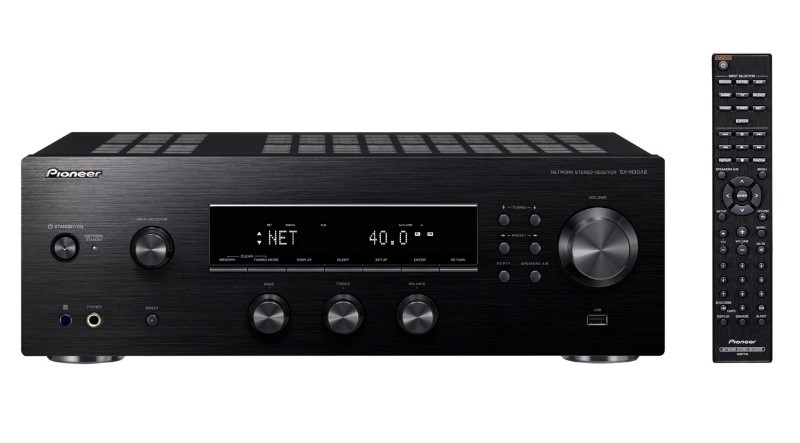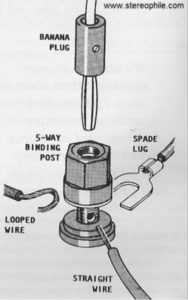AudioReputation is reader-supported. When you buy through links on our site, we may earn an affiliate commission Learn More
Do you want to know just how to connect Speakers to an Amplifier?
Turn the amp off. Now carefully disconnect everything you can. Is it that easy? It might be.
First of all, let’s see what kind of speakers and what kind of amplifier you want to connect together. Bear with me on this, you might just find out something you didn’t plan to.
Table of Contents
How to connect amp to speakers?
Connecting an amp to your speakers is easier than you would think; here’s how:
- Look closely at your amp and speakers.
- Select the correct cables for the amp and speakers.
- Next, connect the cables on the back of your speakers to the back of the amplifier, and you’re all set.
Amplifiers
There are different types of amps:
Pre-Amplifier
The job of the pre-amp is to take the low-level audio signal from a certain music source, process it, and prepare it for the next stage.

Power Amplifier
As the name says, the power amp is there to take that signal from the pre-amp and give it that extra juice so we can hear it through those speakers.

Integrated Amplifier
An integrated amplifier is the combination of the pre-amp and the power amp put together in one unit.

Most users have an integrated amp, generally because it’s more practical and doesn’t take much space. Although there are some high-quality integrated amps, for the better overall sound, splitting each section of the sound reproduction is more desirable (using the separate preamp and amp).
Also, where you can use them: in your home, car, in concert halls, theaters, etc. In this case, we’ll stick to home use and Hi-Fi amps.
Hi-Fi is a term shortened from High-Fidelity, used by audio enthusiasts to refer to high-quality sound reproduction. Vice versa, Lo-Fi refers to Low-Fidelity, lower quality of sound reproduction.
Speakers, a Word About Them

A cabinet with speakers in it is what most of us think of first, also called a loudspeaker.
So, let’s say that a speaker is a device that converts an electrical audio signal provided from an amplifier (power amp or integrated amp) into a corresponding sound.
There is a variety of different types of speakers. Depending on their purpose, you can make a difference between different types of speakers made for the reproduction of different frequencies. Most commonly, speakers are divided into two groups – passive or active.
Most commercially used speakers are passive. They require to be connected to an amplifier through a speaker wire since they don’t have a built-in amplifier.
 Active speakers, also known as powered or self-powered speakers, have a built-in amplifier that requires a heavier cabinet; thus, they are less mobile and functional.
Active speakers, also known as powered or self-powered speakers, have a built-in amplifier that requires a heavier cabinet; thus, they are less mobile and functional.
A regular hi-fi loudspeaker cabinet (like the one in the picture) for home use contains three types of speakers (drivers):
- Mid-range driver
- Tweeter
- Woofers
A tweeter or a treble speaker is intended for high audio frequencies, usually from 2000 Hz to 20 kHz. The name comes from high-frequency sounds birds make.
A mid-range speaker is a driver that produces middle-ranged frequencies from 250 Hz to 2000 Hz.
A bass speaker or a Woofer is the driver designed to produce low frequencies from 50 Hz to 250 Hz. The name comes from a dog’s bark, “woof”, in contrast to the high-pitched sound of Tweeter.
The aperture (or port) on the bottom of the cabinet is intended for the bass reflex system.
Wires? Gauge? What is That?!
From the beginning, to avoid mispronunciations, it should be pronounced as /ɡeɪdʒ/.
The thickness of the wire, simply said. It is defined by the American Wire Gauge (AWG) number.
A lower gauge number means that the wire is thicker and that you will get a higher-quality sound. How? There is less resistance to current flow presented by a thicker wire.
The thickness of the wire can be chosen in a few ways:
In your household, if the speakers are no more than 50 feet (15 meters) away from your amplifier, considering 6 to 8 ohms speakers, 16-gauge wire will do the job just fine.
When your speakers are, let’s say, low-impedance (4 or 6 ohms), and the distance is longer than 50ft, thicker wire is the preferred option (10 to 14-gauge).
How Much Wire Would I Need Between the Amp and the Speakers?
Take a string or a rope, put one end to the amp and the other end to the speaker, and make sure it is decently loose. Now take a measure of that string (rope), and add some extra feet, and that is that.
Connecting them Together, Finally!
Knowing how to connect your speaker to your amplifier is a very useful thing, and gives you the satisfaction that you have assembled it on your own!
Before you start connecting anything, like it was written at the very beginning, make sure your amplifier is turned off. This will prevent loud thumps, clicks, pops, vibrations, which can damage your speakers or, in a better, less expensive case, scare you or just make an unpleasant and uncomfortable noise.
Choose the right type of cables for your speakers and amp. There are different types of connectors that you might encounter:
- Bare wires
- Spade connectors
- Pin connector
- Banana plugs


On higher-quality amps and speakers, you will see a 5-way binding post on the back of the speakers and on the back of the amp, and ways how to connect them.
When using spade connectors, bare wires, pin connectors, or banana plugs, make sure you have the right polarity connected: red to red and black to black (from the amp to the speaker).
Cheaper speakers and amplifiers don’t have 5-way binding posts. Instead, they have spring-clip speaker terminals. These terminals are not as versatile as 5-way binding posts and can only accept bare wire.


Hello, my name is James Longman.
I’m a writer and editor at AudioReputation. I disassembled my first portable AM/FM radio when I was only 8. At the age of 11, I burned the circuit board on my old boombox cassette player. I’m not going to explain how but it was reckless and stupid.
Since then, I have become much more careful around radios, boomboxes, and other audio devices (at least, I like to think so) but I have never lost the passion for audio equipment. Throughout 20 years of my professional career, I’ve been working for various audio equipment manufacturers and even started building speakers on my own in my little workshop.
I love the work we do here at AudioReputation. Testing, comparing, and evaluating all kinds of audio devices (speakers, soundbars, headphones, home theater systems, etc.) is something I truly enjoy. I try to be unbiased and give you my honest opinion on every piece of equipment I test. Still, you should take my reviews with a pinch of salt and always be just a little bit skeptical. The fact that I liked some speaker or soundbar doesn’t mean that you are going to love it. If you have the opportunity, you should test it/hear it before buying it.

